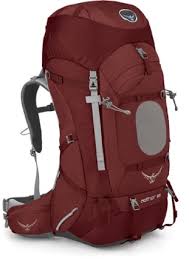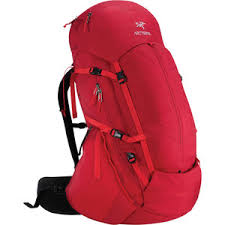rei aconcagua backpack

Top quality mountaineering clothing and equipment is an investment that will see you through years of adventures. It is wise to choose carefully, and not to skimp on quality. The companies and products you see listed below can serve as starting points of reference for you. Take this list to your local outdoor specialty shop.Feel free to use this list as a reference as you prepare for your trip, but note that not all brands and models are current. Running shoes or light trail shoes: For travel and easy walking. Sport sandals: Such as “Crocs”, Tevas or Chacos. Hiking boots: Leather or fabric/leather with sturdy mid-sole and a Vibram sole (Scarpa, Merrell, La Sportiva). Climbing boots: Plastic double boot (La Sportiva or Scarpa). Booties: Down or synthetic fill with thick foam soles (North Face, Mountain Hardwear, Mountain Equipment Co-op, or REI—thin rubber-rubber soled booties will be more durable and will last longer). Lightweight socks: 2-3 pairs synthetic/wool blend (Smartwool, Bridgedale, Fox River).

Midweight socks: 2-3 pairs synthetic/wool blend (Smartwool, Bridgedale, Fox River). It is very important that your clothes fit loosely and comfortably so you can layer your clothes appropriately. This is key for maintaining a comfortable body temperature. Lightweight long underwear top: (Patagonia Capilene, REI, Mountain Equipment Co-op) Midweight long underwear tops: A zip-t neck design is good. Light colors are better for tops because they are cooler when hiking in direct sunlight and just as warm as dark colors when worn underneath other layers (Patagonia, North Face, Mountain Hardwear) Lightweight long underwear bottoms: Dark colors are preferable because they do not show dirt (Patagonia, REI, Mountain Equipment Co-op) Midweight underwear bottoms: Dark colors are preferable because they do not show dirt. (Patagonia, REI, Mountain Hardwear, Mountain Equipment Co-op) Briefs: Synthetic is best, cotton is ok. Short-sleeved T-shirts: Two or three synthetic;

most nylon running shirts or athletic shirts work well (North Face, Patagonia, Under Armour) Jacket synthetic or fleece: Synthetic jackets or pullovers are a great alternative to fleece because they are lighter and more compressible. Primaloft type fill or Polartec 100 or 200 fleece is recommended (Patagonia, Outdoor Research, Mountain Equipment Co-op). Synthetic insulated pants: Primaloft or Polarguard 3D—Full side zips are recommended. Mountain Hardwear Compressor Pants and Outdoor Research Neoplume Pants are examples. Fleece pants Polartec 100 or 200 are an acceptable alternative, but they are bulky, heavier and less versatile. Down insulated jacket w/hood: This is mandatory (Marmot, North Face, Mountain Hardwear). Waterproof breathable jacket & pants: Your jacket must have a hood, your pants should have full-length side zips (ArcTeryx, Marmot, Mountain Equipment Co-op). Liner gloves: Any brand of Windstopper fleece. Mittens w/ pile liners: Waterproof/windproof shell with pile liners.

Bandana: Two or three traditional cotton bandanas will be invaluable. A circular bandana like those made by Buff may be useful too. Sun hat: Any lightweight hat with a good brim or visor. Wool or fleece hat: Any brand of warm hat that can go over ears. Balaclava: Minimum one--Some people layer a very thin Capilene balaclava under a thicker fleece one.
baggu backpack cactus Sunglasses #1: For high altitude, you need one pair of high quality 100%UV and 100%IR with a minimum of 80% light reduction sunglasses.
stihl 600 magnum backpack blower priceSide shields such as those found on “glacier glasses” are not required, but size and shape of lens should offer maximum coverage of the eyes to protect them from bright light on snow.
udg backpack amazon
Julbo makes some excellent mountaineering glasses. Sunglasses #2: Bring 1 pair high quality 100%UV and 100%IR, for lower elevations, and also as a backup. It is important to have a spare pair of sunglasses. Gaiters: You may choose to bring larger gaiters for your double boots as well as short gaiters, such as Outdoor Research “Rocky Mountain Lows” for your hiking boots (Outdoor Research, Black Diamond). Headlamp with spare bulb: Plus two sets of extra batteries (Petzl or Black Diamond) Ice axe: General mountaineering axe, “walking” length, 70 - 80 cm length, depending on your height (Black Diamond Raven Pro or Grivel) Axe leash: You will need a leash to attach your axe to you harness, not a “wrist loop”. Bring a commercial leash designed for glacier travel or 6 ft of 9 / 16 inch webbing and your guide will help you construct one. Climbing harness: A fully adjustable belt and leg loops are required. We recommend Alpine Bod by Black Diamond. Crampons: Bring a 12-point step-in crampon for glacial travel.

Avoid crampons used for waterfall ice climbing (Grivel or Black Diamond). We really like the Sabretooth Pro by Black Diamond. Two Carabiners: One locking, one non-locking Backpack: You will need 5000 cubic inches or more (80+ liters), with an internal frame. Top opening mountaineer’s rucksack style is best. Avoid large zipper openings and excessive outside pockets. Larger packs are better than smaller, because they are easier to pack with cold hands and they distribute loads more effectively. (North Face, Gregory, Arc’Teryk). Small day pack: A summit pack is a very light packable daypack that can be carried in a backpack and used for summit day. The summit pack must be able to carry extra clothing, two or three quarts (liters) of water and technical climbing gear including ice axe and crampons. A near empty backpack should not be used for summit day. It is better to carry an extra pound on the approach in the form of a summit pack than to carry five or six pounds of bulky backpack to the summit and back to advanced base camp.

Useful for airline carry-on and for touring in cities (Lowe Alpine Summit Attack, Grivel Air Tech Rucksack, Arc’teryks).To protect your gear on rainy or snowy days (REI, MEC, Osprey, Gregory). Down sleeping bag: Rated to at least negative 10 F (-25C), 700 down fill minimum (Marmot, Mountain Hardwear) Sleeping pad: Inflating, full-length (Therm-A-Rest) Water bottles: Two 1-liter, leak-proof wide-mouth bottles. Lightweight steel thermal bottle: Some type of thermos to keep liquids hot—One liter size. Pee bottle: One 1-liter, leak-proof wide-mouth. (Nalgene Poly or Lexan bottles) Pee funnel for women: (Freshette) Pack towel: Small or medium size, do not bring “terrycloth”, bandanas work in a pinch (PackTowl) Trekking poles: Lightweight poles with 2 or 3 sections so they compress while not being used. Swiss army knife: Remember not to leave in carry-on bags for any international or domestic flight. Sunscreen: SPF 30 or higher, non-oily (Dermatone or L’Oreal)

Lipscreen: SPF 30 or higher, any brand Toiletry kit: Toothbrush, toothpaste, skin lotion, alcohol-based hand sanitizer, soap, comb/brush, shave kit, (bring travel size bottles to keep your kit small). First-aid kit: Ibuprofen/Aspirin, assorted band-aids, moleskin, Neosporin-type suave, small gauze pad, roll of adhesive tape, tweezers, safety pins. Include any prescription travel meds that might be prescribed by your doctor (antibiotics, Diamox, sleep aids). Water purification: Such as Potable Agua (iodine tablets). You will be provided with treated water at camps and on the climbs of both Ojos and Aconcagua but a personal supply is handy for travel and in hotels. Zip-loc bags: Always useful, bring them for personal trash bags (including disposing of toilet paper on bathroom breaks along the trail), and to organize small items. Ear plugs: They are very useful in noisy lodges and tents. You’ll find them in most drug stores and hardware stores. Expedition duffel bag: 8000+ cubic inches (130+ liters).